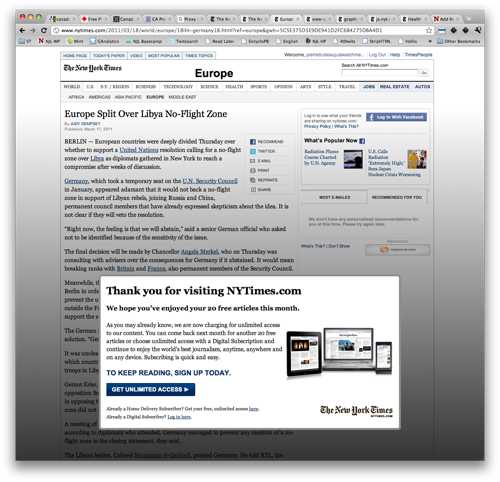Excerpt from Joshua Benton's full article on niemanlab.org:
"... (Obligatory note: I think the Times is right to ask regular readers to pay, and I think their paywall is basically well designed. Me, I just became a print subscriber last week, using the Frank Rich Discount. Support your local journalist!)
...This CSS-and-Javascript hole, however, isn’t difficult to use at all. One drag into your bookmark bar, then one click whenever you hit a blocked article.
And yet this workaround is so blindingly obvious to anyone who’s ever worked with code that it’s difficult to imagine it didn’t come up in the paywall planning process. The other major news paywalls — WSJ, FT, The Economist — don’t actually send the entire forbidden article to your browser, then try cover it up with a couple lines of easily reversible code. They just hit you with a message saying, in effect, “Sorry, pay up here” whenever you stray past the free zone.
And that leakiness is actually a defensible choice, I think, on the Times’ part. Imagine a Venn diagram with two circles. One represents all the people on the Internet who might be convinced to pay for nytimes.com. The other represents all the people on the Internet who (a) know how to install a bookmarklet or (b) have read a Cory Doctorow novel. Do you really see a big overlap between the two? If someone is absolutely certain to never pay for the NYT, then it makes sense to squeeze a little extra advertising revenue out of them on the rare occasions when a link sends them to nytimes.com...."





No comments:
Post a Comment